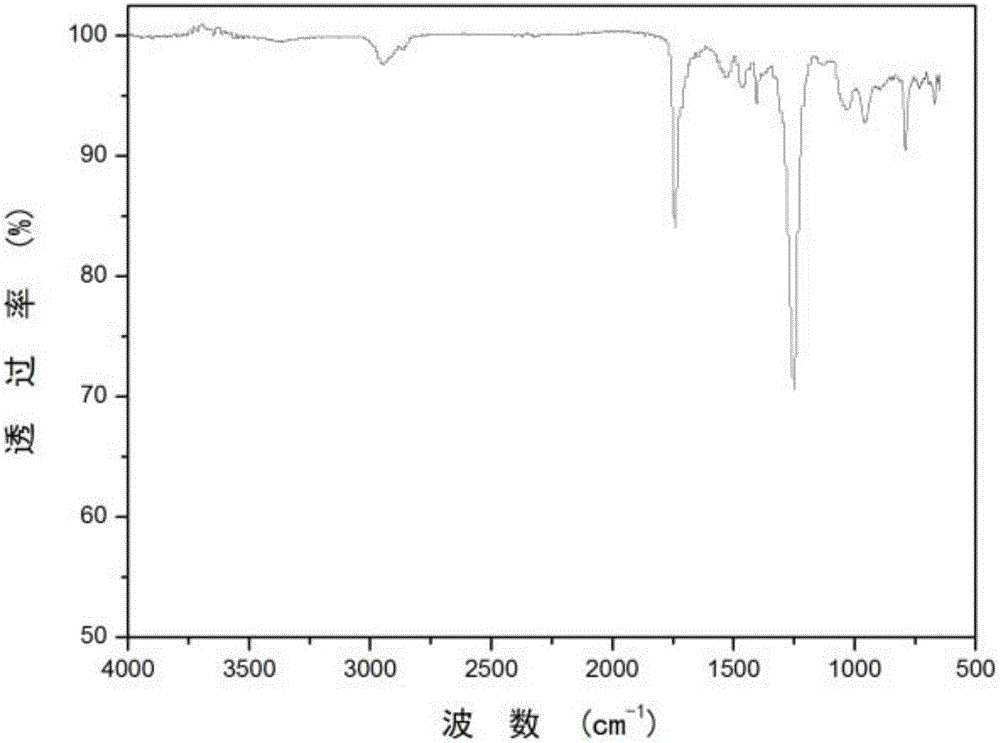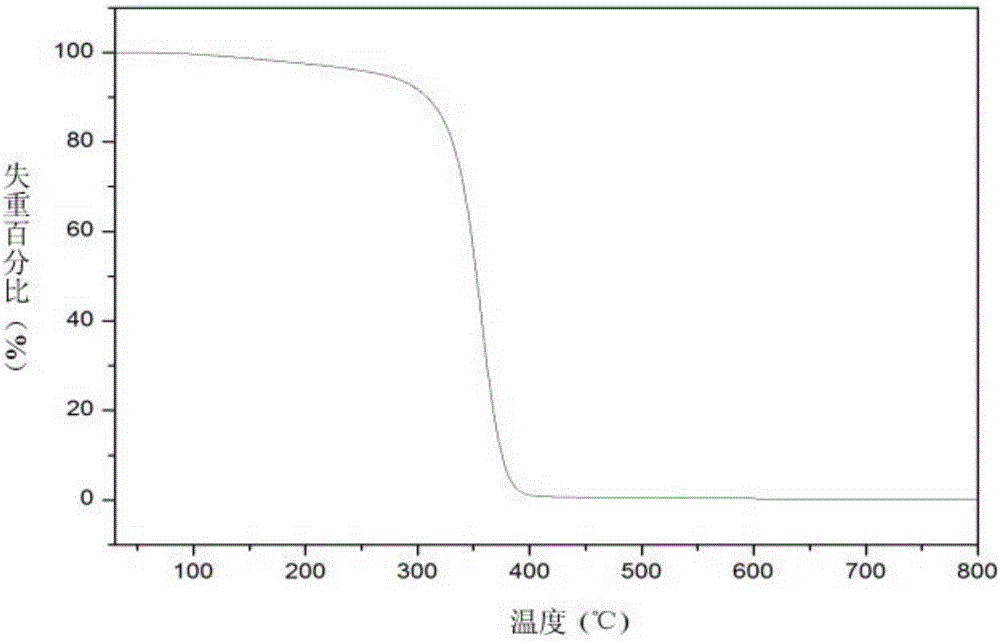Heat-resistant hyperbranched polyurethane and preparation method thereof
A technology of hyperbranched polyurethane and heat resistance, applied in the field of hyperbranched polymers, can solve problems such as poor heat resistance of polyurethane, and achieve the effects of improving tensile strength, improving hygienic performance, and simple synthesis reaction
- Summary
- Abstract
- Description
- Claims
- Application Information
AI Technical Summary
Problems solved by technology
Method used
Image
Examples
preparation example Construction
[0012] The preparation method of heat-resistant hyperbranched polyurethane of the present invention may further comprise the steps:
[0013] Step (1): Dissolve diisocyanate (IPDI) in an aprotic solvent, and add it dropwise to polyester polyol (PCDL) under nitrogen atmosphere, and add a catalyst to it, and stir the reaction at a temperature of 60-80°C 2~4 hours, obtain polyurethane prepolymer (being A 2 monomer);
[0014] Step (2): the melamine (i.e. B 3 monomer) is dissolved in an organic solvent, mixed with the polyurethane prepolymer obtained in step (1), stirred and reacted for 2 to 24 hours at a temperature of 50 to 80° C., to obtain hyperbranched polyurethane, and the present invention is through A 2 +B 3 Direct polymerization to form hyperbranched polyurethane (HBPU).
[0015] In the above technical solution, in the step (1), the polyester polyol is vacuum dehydrated at a temperature of 120-130° C. for 1-2 hours, cooled to room temperature, and then added to the reac...
Embodiment 1
[0024] (1) Accurately weigh 10 g of polycarbonate diol (molecular weight: 1000) in a four-necked flask, and dehydrate it under vacuum with an oil pump for 2 hours at 130° C., then cool it down to room temperature;
[0025] (2) Mix 2.89g of isophorone isocyanate and 20mL of aprotic solvent, and add dropwise to step (1) under the condition of nitrogen protection, while adding dropwise 0.0258g of catalyst dibutyltin dilaurate, at a temperature of 80°C Down reaction is to obtain polyurethane prepolymer in 2 hours;
[0026] (3) Accurately weigh 0.924g melamine and dissolve it in 20mL dimethyl sulfoxide solvent, mix and react with the polyurethane prepolymer obtained in step (2), and react for 2 hours at a temperature of 80°C to obtain heat-resistant hyperbranched polyurethane .
Embodiment 2
[0028] (1) Accurately weigh 10 g of polybutylene adipate diol (molecular weight: 1000) in a four-necked flask, and at 120 ° C, use an oil pump to vacuum dehydrate for 1 hour and then drop to room temperature;
[0029] (2) Mix 3.3g of toluene diisocyanate and 20mL of aprotic solvent, and add it dropwise to step (1) under the condition of nitrogen protection. At the same time, add dropwise 0.0266g of catalyst dibutyltin dilaurate, and react at a temperature of 60°C Obtain polyurethane prepolymer for 4 hours;
[0030] (3) Accurately weigh 1.176g of melamine and dissolve it in 20mL of dimethyl sulfoxide solvent, mix and react with the polyurethane prepolymer obtained in step (2), react at a temperature of 50°C for 24 hours to obtain heat-resistant hyperbranched polyurethane .
PUM
 Login to View More
Login to View More Abstract
Description
Claims
Application Information
 Login to View More
Login to View More - R&D
- Intellectual Property
- Life Sciences
- Materials
- Tech Scout
- Unparalleled Data Quality
- Higher Quality Content
- 60% Fewer Hallucinations
Browse by: Latest US Patents, China's latest patents, Technical Efficacy Thesaurus, Application Domain, Technology Topic, Popular Technical Reports.
© 2025 PatSnap. All rights reserved.Legal|Privacy policy|Modern Slavery Act Transparency Statement|Sitemap|About US| Contact US: help@patsnap.com


